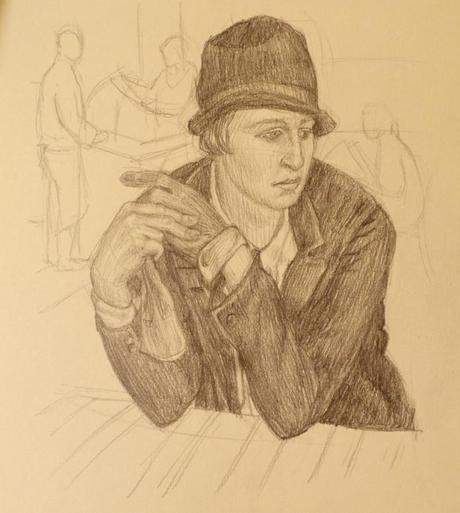
Copy after Lotte Laserstein, Im Gasthaus
I was on my way to Berlin, buzzing with ambition, when I was seduced by Vienna. This proud city, with its somewhat faded opulence, in all shades of cream and flecked with gold, is not the ever-reinvented hive that is Berlin. While Berlin constantly recreates itself in the wake of the catastrophic pummelling it took in the twentieth century, Vienna lingers in its early twentieth century grandeur, reflecting nostalgically on its lavish achievements, and unhurriedly meanders into this century like its curling, well-tended garden paths. An exhibition at the Lower Belvedere currently reflects on the contrast between these two German-speaking cities, and on the flow of artists between them during the early part of last century. Wien – Berlin: Kunst zweier Metropolen (The art of two cities) traces the cross-pollination and divergences of the art of these two cities at a time of impressive growth and change.
In both Vienna and Berlin, artists broke away from the established Künstlerhaus system of annual central exhibitions and established their own Secessions in the late 1800s. Rather than bowing to the narrower demands of the traditional methods of exhibiting, artists banded together to create a more liberal environment that welcomed extremely varied art. Quality was prized over a strict aesthetic.
Even so, each city infused its Secession with its own flavour. Vienna, steeped in its tradition of the salon in which artists, writers, scientists, musicians and other intellectuals regularly came together and let their ideas be fertilised by other disciplines, moved a little slower than Berlin. Vienna persisted in its holistic outlook, cemented in these salons and in integrated design workshops like the Wiener Werkstätte which married luxurious and individualised ornamentalism with function. Life was infused with art, and art blossomed in sympathy with science, and Vienna sought greater and greater refinement in this cyclical motion, eternal as the leafy ring road that circles the Innere Stadt.
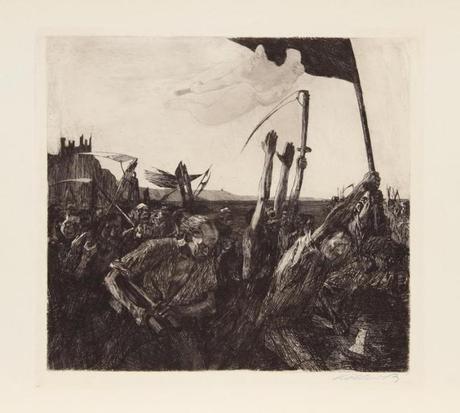
From the Weaver cycle by Käthe Kollwitz
Berlin, meanwhile, marched onwards to the beat of industrialisation. Speed and progress birthed a buzzing metropolis, and this in turn transmuted into the dissonant, angular and aggressive art of German Expressionism. The Belvedere exhibition begins with the bustling optimism of the turn of the century—train stations flooded with people, glistening streets full of nightlife despite rain, charming dancers, an explosion of colour. Yet Vienna is already somewhat more sedate, with refined ladies elegantly poised as in the portraits by the Viennese Gustav Klimt (Johanna Staude, 1917/18) and Otto Friedrich (Elsa Galfrés, 1908; Gabrielle Gallia, undated). And the strains of industrialisation are already passionately depicted by the German Käthe Kollwitz in her Weavers (1897) series, with trauma etched into the extremely individual faces marching in protest, eyes crazed. German Hans Baluschek’s Montagmorgen (Monday morning) (1898) is a blue haze of Berliner debauchery, with independent modern girls stripped down to their stockings and undergarments languidly welcoming the dawn with their beer bottles and cigarettes. The ‘cultivated refinement’ of Vienna is contrasted with the ‘uncompromising progress’—and the ensuing stresses—of Berlin. Vienna’s ‘unhurried contentment’—Gemütlichkeit—was paraded as a singularly Viennese virtue, but was beginning to stand for the city’s inability to keep up.
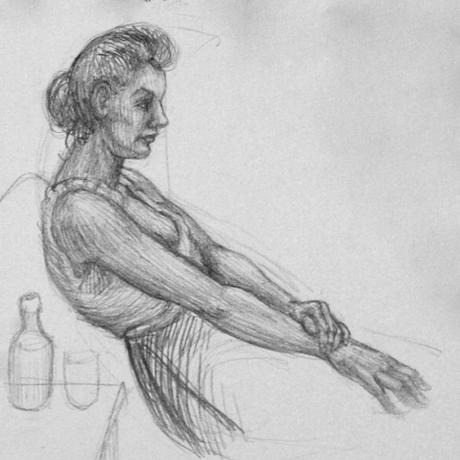
Copy after Hans Baluschek, Montag Morgen
As an intellectual locus, however, Vienna produced its own Expressionists to match the newer, more forceful art burgeoning in Berlin. As Eric R Kandel describes in his book The age of insight, the Austrian Expressionists were influenced by the inward-looking ideas of the emerging field of psychology, in which the Viennese Sigmund Freud was making bold strides. Austrian painters such as Max Oppenheimer, Oskar Kokoschka and Egon Schiele were connected with, if not living in, Berlin, but producing a particularly Viennese brand of Expressionism. The ornamental heritage championed by Klimt found its way in to their compositions, which often place the figure on a flat, pearlescent ground; a sort of emotional reductivism. But the gallery notes also refer to ‘the psychologically precise observation of gesture and posture’ characteristic of the Viennese Expressionists, as well as their sculptural construction of volumes in the figure.
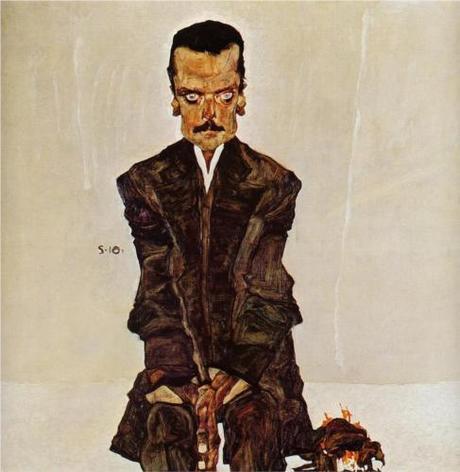
Bildnis des Verlegers Eduard Kosmack, by Egon Schiele
The angular Bildnis des Verlegers Eduard Kosmack (1910) (Portrait of the publisher Eduard Kosmack) by Schiele, although stripped to a soft, bare ground, and although emotively distorted with monstrous joints and hands and heavy, dark-ringed eyes, pays careful attention to anatomical landmarks and three-dimensional representation. The distortions deviate from this certain frame, and the image shimmers with fury and intensity, as though Kosmack’s head might explode at any moment, a burning book cast to his side. Likewise, Oppenheimer’s Geißelung (1913) (Scourging), while expressively abstracted, clings to solid and fluid drawing, with pleasing graphic arcs of ribs showing through thinly painted flesh. The elongated Christ-like figure, whose innards are being torn to shreds, is surrounded by angular, universalised figures whose converging faces border on religious ecstasy. The pain is thoroughly depicted in the drawing, with the colours soft and subdued—the blood-stained drapery is a gentle, rosy shade of pink. This is in notable contrast with the German Expressionist use of colour to carry emotion, and the often flattened shards of shapes, heavy as woodcuts.
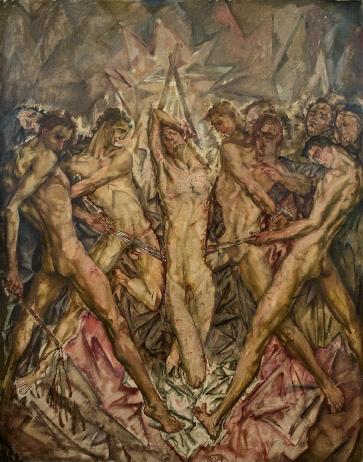
Geißelung, by Max Oppenheimer
In the 1920s, a sober disillusionment seemed to overtake both cities. The heavy-handed heart-rending of Expressionism gave way to the distanced, dreamlike mood of New Objectivist painting. The portraits of the German Christian Schad are overly sharp and precise: egg-smooth, with deep creases, carefully outlined and overlarge eyes, empty and lifeless. As in Lola, the colours are strong and the light is bright but a deep melancholy pervades these seemingly bold personalities. The accompanying still lives are firmly delineated arrangements of perfectly ordinary objects that turn surreal in these impersonal representations. Hans Baluschek’s Sommerabend (1928) (Summer evening) is again drenched in an unsettling blue light, the shadows comprising the fleshier pink colours of the tired out tenants of a windowless apartment block in their dusty garden. The paint is lively and brushy, even on flat surfaces. The scene is framed by two lights: on the left, the blazing lights of a train forging ahead, and on the right, a full, low-slung golden moon. The people recline in awkward love-triangles, clutching desperately at simple pleasures, balanced between these two lights.
And then, tucked away in the last room, amongst sporting images and caricatures, are two incredible paintings by the German Lotte Laserstein. Her women are modern, sporting, beer drinking, and plain: their gazes are not empty, but heavy with understanding, a knowing and accepting melancholy. Tennisspielerin (1929) (Tennis player) is awash with watery shadows, the whole painting laid down over a rough, brushy layer that shows a thick texture through the image. The lighter tones look wiped away, leaving a dreamy, hazy finish despite the deep reddish colour of the skin. With her face turned away, it is her body that says everything. Im Gasthaus (1927) (In the tavern) is stunning in its own way: much smaller, and painted on wood, the paint layers build up like watercolour though they are oil, leaving an agitated, blotchy surface. The lady’s blue button eyes near fall out of her head; her fingers press deeply into her glove. The modern world is upon us.
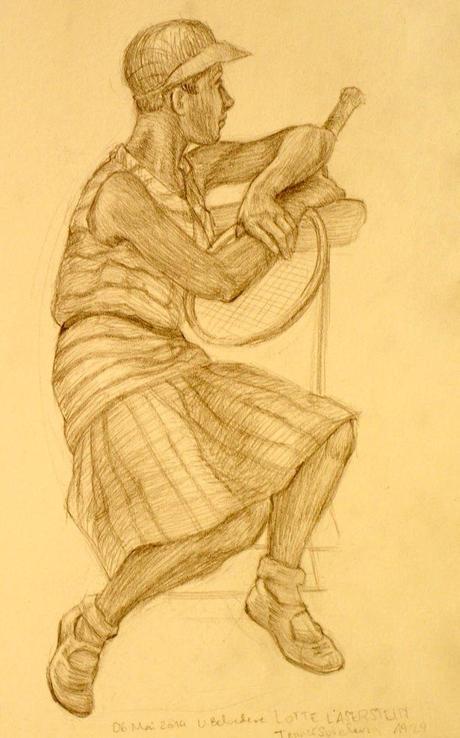
Copy after Lotte Laserstein, Tennisspielerin
Our pictorial history comes to a halt here, but life goes on quietly in Vienna; the former imperial capital overshadowed by Germany’s vibrant young capital. But while young people lust after a nightlife like Berlin’s, and know this is not the place to come to make a name for themselves, the comment of a young scientist resonates deeply: ‘In Berlin you are always having a good time. In Vienna, you get some peace at last, and can really get some serious work done.’ And so, perhaps another intellectual milieu is simmering under the surface of our elegant city, as undistracted artists and scientists continue to exchange philosophies in velvet-upholstered and wood-panelled coffee houses. Only, not before lunch, please.
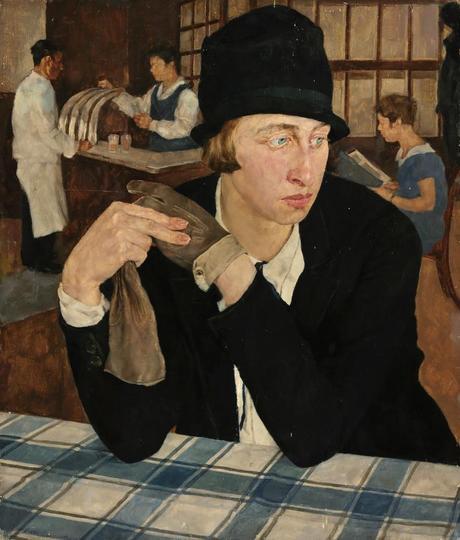
Im Gasthaus, by Lotte Laserstein
The Wien – Berlin exhibition runs just a little longer, until 15 June 2014, at the Lower Belvedere in Vienna.

